Since the early twentieth century, the production of optical components and systems has evolved considerably across the world, both in terms of the goods produced and the methods used to produce them. Until recently, the sector relied significantly on mom-and-pop styles of manufacturing, with much of the work being done on an order-by-order basis by extremely small shops. Now due to new laser technology glass is able to be manufactured on a large scale. Most glass manufacturers use laser tech to make their glass but who does it the best?
Most rifle scope experts tend to agree that while European scopes were by far the best 5 to 10 years ago, US manufacturers have lately made great progress and have caught up to their European rivals. The engineering and manufacturing of top-of-the-line scopes is a thing of beauty.
Scopes need to be put together perfectly in order for them to work properly. You want your scope to be put together like a well-made Swiss watch.
There are many important parts that go into a scope’s overall functionality. In this article we will be focusing on scope glass and why it’s so important when shopping for a scope.
How to Gauge Glass Quality
Clarity – This relates to the scope’s visual clarity throughout the entire range of power. So the scope is just as crystal clear on 1 power as it is on 10.
Brightness – An easy term to understand. It deals with the image brightness as you look through the scope. This term only relates to the glass itself and not other features, some scopes have been engineered to let more light in allowing for brighter images.
Color – Color refers to the image color the lens reflects into your eye. Lower quality glass may have a strange hue or look a little blurry because the Red, Blue, and Green colors are not aligning properly.
Eye Relief – How to determine eye relief on a scope is important. Lower end glass will have poor eye relief which will at times leave you moving your head around in order to find a full image through the scope.
Out of these, I would say clarity is the most important when looking for high-end glass. A crisp clear image usually means that brightness, color, and eye relief are all above average.
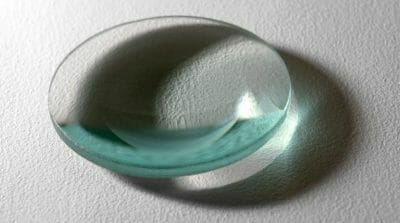
Types of Rifle Scope Glass
As most of us know when light hits glass it acts like a prism and the light is refracted. As the glass begins to bend the light it also separates the colors into three main ones. Red, Green, and Blue. Red light waves are low frequency and are a much longer wavelength than their counterparts. The greens are a little bit shorter of a wavelength and are traveling at a higher frequency, and the blues have a real high frequency and a very short wavelength.
The specific composition of chemistry employed within the glass, as well as the shape of the lens, will all impact how the colors split up once refracted.
Chromatic Glass
Most scopes don’t use this type of glass anymore. With this lens, the colors are separated but they do not come to the same exact focal point. So what you end up with is an image that may look a little blurry.
Achromatic Glass
Unlike the older chromatic lenses, Achromatic lenses usually allow two of the colors (red and blue) to intersect at the same focal point once refracted by the lens. This allows for a crisper clearer image.
Apochromatic Glass
Now if you want the best and you have a lot of money to spend then you can get a premium Apochromatic lens. This type of glass actually has three separate lenses put together to allow every single color to line up on the same plane. These types of lenses have really sharp images with perfect color correction providing the best clarity.
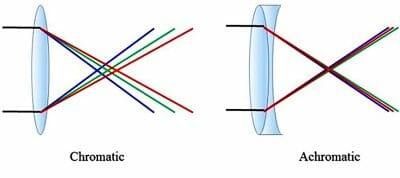
Scope Lens Coatings
While working with Carl Zeiss in 1935, a Ukrainian scientist called Alexander Smakula devised anti-reflective lens coatings. His single coating technique enhanced the performance of a wide range of optical equipment significantly. Alexander started a lasting trend in lens tech that has seen many improvements and designs over the years.
Coated: At least one lens surface has a single layer of coating.
Fully Coated: All surfaces have a single layer of coating.
Multicoated: At least one lens surface has more than one layer of coating.
Fully Multicoated: All glass surfaces have multiple layers of coating.
Rifle Scope Glass Lingo
ED Glass- ED glass, also known as extra-low-dispersion glass, is commonly applied in optical applications where visual clarity and precision are critical. It can be found in top-of-the-line camera lenses, binoculars, sights, scopes, rangefinders, and a slew of other devices that rely on accurate picture quality.
HD Glass- Many people make the mistake of thinking HD glass means High Definition, remember you are not buying a TV. This is a common misunderstanding. When it comes to rifle scope lenses HD glass refers to High-Density. The higher the density, the purer the glass is, which reduces the glass’s refractivity (internal materials play a small part as well). The picture will be clearer and less distorted if there is less refraction when light goes through the lens.
Is HD or ED rifle scope glass better? Well, the short answer is they are both great in their own ways. I tend to prefer ED as HD is often used as a marketing gimmick by lower-end scopes because everyone refers to HD as “High Definition”
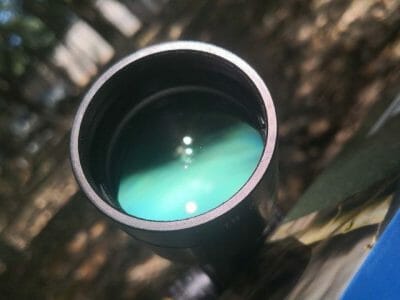
What Brands Have the Best Glass?
I have included below a few brands that have great clarity in large part due to their glass machining and engineering.
- Kahles – A super-expensive German brand that produces great glass, but at a hefty price. Since 1898 this company has been perfecting its craft to provide some serious clarity and precision
- Nightforce – A well-known American company that produces high-quality glass at a reasonable price. Still pricey, but not as much as other high-end brands.
- Arory – We use multilayer-coated lenses to bring you crisp and clear images in any weather. We are a little biased but believe our scopes stand up with most of these top-tier brands
- Zeiss – Another popular German brand that has been around since 1846. Spectacular scopes and binoculars. Not cheap my friends.
- Leupold – Leupold is well known and has a variety of top-of-the-line to low-end optics. Some of their cheaper scopes have come under a bit of scrutiny but their high-end stuff is legit.
- Schmidt & Bender – Very expensive European brand, but you get what you pay for. Many precision shooters swear by this brand and are very loyal, and for good reason.
- Bushnell – They make a variety of products from scopes to binoculars to golf range finders. Their “Elite” series riflescopes are highly recommended and come at a lower price point.
- Swarovski – Expensive brand, but the engineering and machining of their scopes are truly beautiful. Good looking and super clear scopes.
Scope Glass Final Take
Many individuals believe that a high magnification scope is the best option, but when they get their freshly acquired scope home and crank the dial to maximum power, they realize that it is more blurry than when on low magnification. This is because you are zooming in on optical imperfections in the glass.
If you want to purchase a high magnification scope (let’s say over 10 power) then you want to pay attention to the optical glass clarity. Because after all you can have the perfect glass with supreme clarity but if it doesn’t line up with your point of impact all that glass tech doesn’t matter.


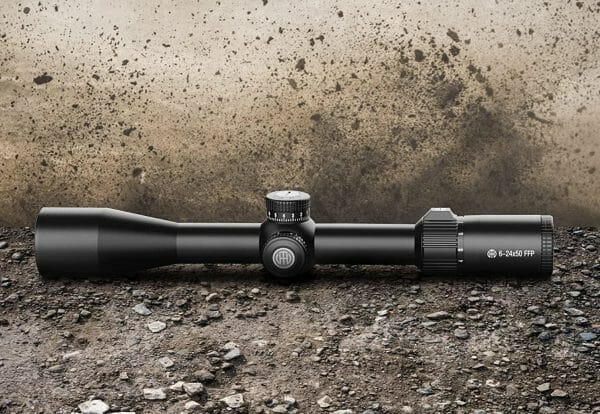



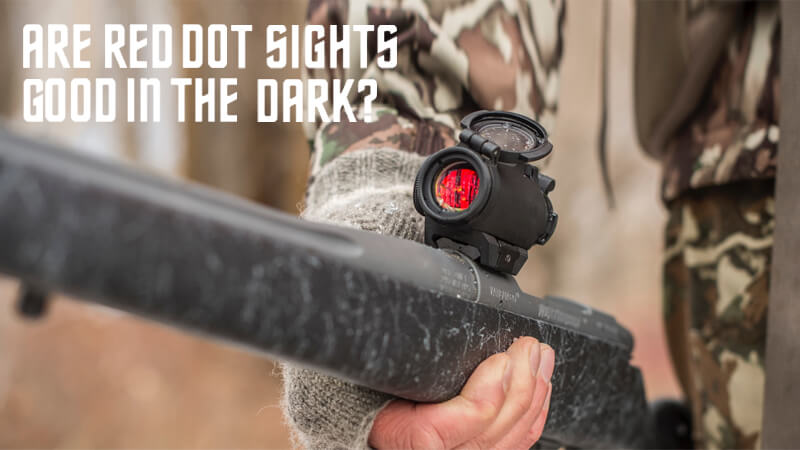
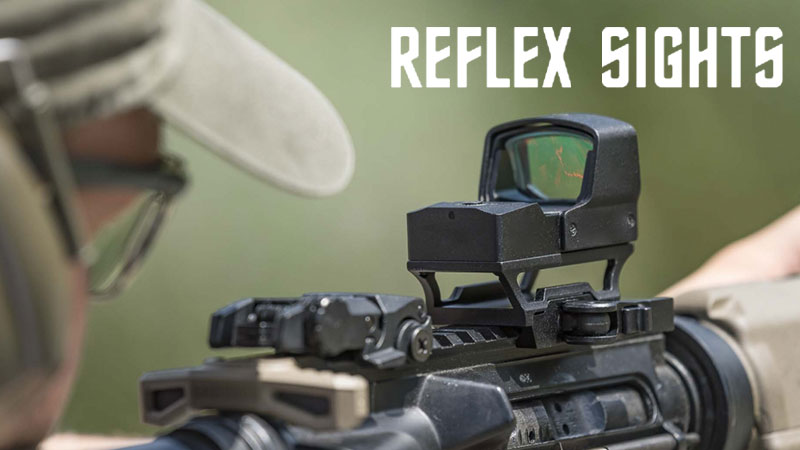

Leave A Comment
You must be logged in to post a comment.